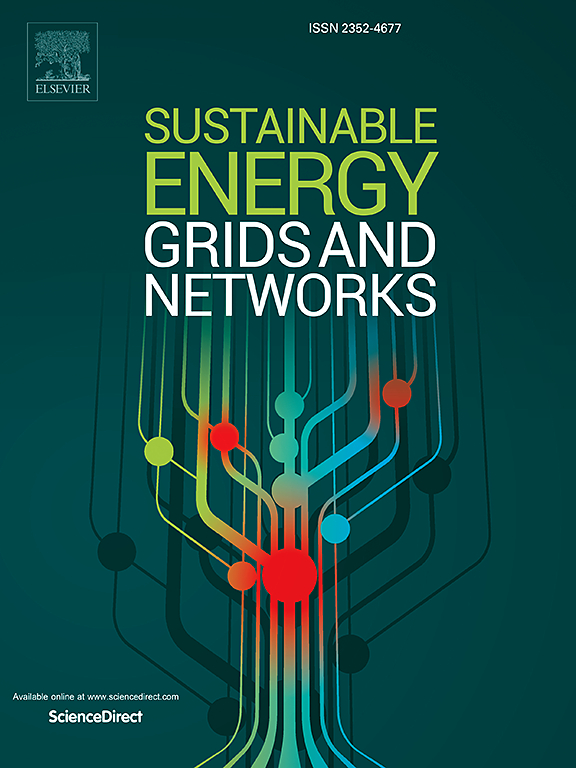利用地理信息系统和毕达哥拉斯模糊层次分析法加强太阳能电站选址
IF 5.6
2区 工程技术
Q2 ENERGY & FUELS
引用次数: 0
摘要
日益增长的全球能源需求和环境问题使得向可再生和可持续能源的过渡变得至关重要。太阳能是一个很有前途的选择,因为它的可用性、成本效益和环境兼容性。然而,太阳能发电厂(SPPs)的效率很大程度上取决于涉及多个空间和非空间标准的最优选址。本文介绍了一种将毕达哥拉斯模糊层次分析法(PF-AHP)与地理信息系统(GIS)相结合的混合方法,以解决多准则决策(MCDM)中的不确定性和主观性问题。此外,对基于gis的适宜性图和指标权重进行了比较分析。结果表明,IF-AHP产生的权重分布几乎是均匀的,这使得它在优先考虑太阳辐射和交通等关键因素方面的效果较差,而这些因素对于高效和经济的SPP规划至关重要。相反,PF-AHP提供了一个与专家判断和文献相一致的更有区别的方法。基于pf - ahp的适宜性图正确地识别了eski本文章由计算机程序翻译,如有差异,请以英文原文为准。
Enhanced site selection for solar power plants utilizing the geographic information system and pythagorean fuzzy analytical hierarchy process method
The rising global energy demand and environmental concerns have made the transition to renewable and sustainable energy sources essential. Solar energy is a promising option due to its availability, cost-efficiency, and environmental compatibility. However, the efficiency of solar power plants (SPPs) strongly depends on optimal site selection involving multiple spatial and non-spatial criteria. This study introduces a hybrid approach integrating the Pythagorean Fuzzy Analytic Hierarchy Process (PF-AHP) with Geographic Information Systems (GIS) to address uncertainty and subjectivity in multi-criteria decision-making (MCDM). Additionally, a comparative analysis between PF-AHP and Intuitionistic Fuzzy AHP (IF-AHP) was conducted, focusing on criterion weights and GIS-based suitability maps. Results show that IF-AHP produces nearly uniform weight distributions, making it less effective at prioritizing key factors such as solar radiation and access to transportation—both essential for efficient and cost-effective SPP planning. Conversely, PF-AHP offers a more differentiated that aligns with expert judgment and literature. The PF-AHP-based suitability map correctly identifies operational SPP regions in Eskişehir (Sivrihisar, Tepebaşı, Günyüzü, and Odunpazarı) as highly suitable. In contrast, the IF-AHP map misclassifies these same regions as poorly suitable, highlighting its limitations in spatial accuracy. The methodology was applied in Eskişehir, Turkey, using criteria such as solar radiation, slope, and proximity to restricted areas. Through GIS-based weighted overlay analysis, approximately 154 distinct areas—covering around 46.47 % of the study area—were identified as suitable for SPP installation. This approach provides a reliable and spatially transparent decision-support tool for sustainable energy planning.
求助全文
通过发布文献求助,成功后即可免费获取论文全文。
去求助
来源期刊

Sustainable Energy Grids & Networks
Energy-Energy Engineering and Power Technology
CiteScore
7.90
自引率
13.00%
发文量
206
审稿时长
49 days
期刊介绍:
Sustainable Energy, Grids and Networks (SEGAN)is an international peer-reviewed publication for theoretical and applied research dealing with energy, information grids and power networks, including smart grids from super to micro grid scales. SEGAN welcomes papers describing fundamental advances in mathematical, statistical or computational methods with application to power and energy systems, as well as papers on applications, computation and modeling in the areas of electrical and energy systems with coupled information and communication technologies.
 求助内容:
求助内容: 应助结果提醒方式:
应助结果提醒方式:


